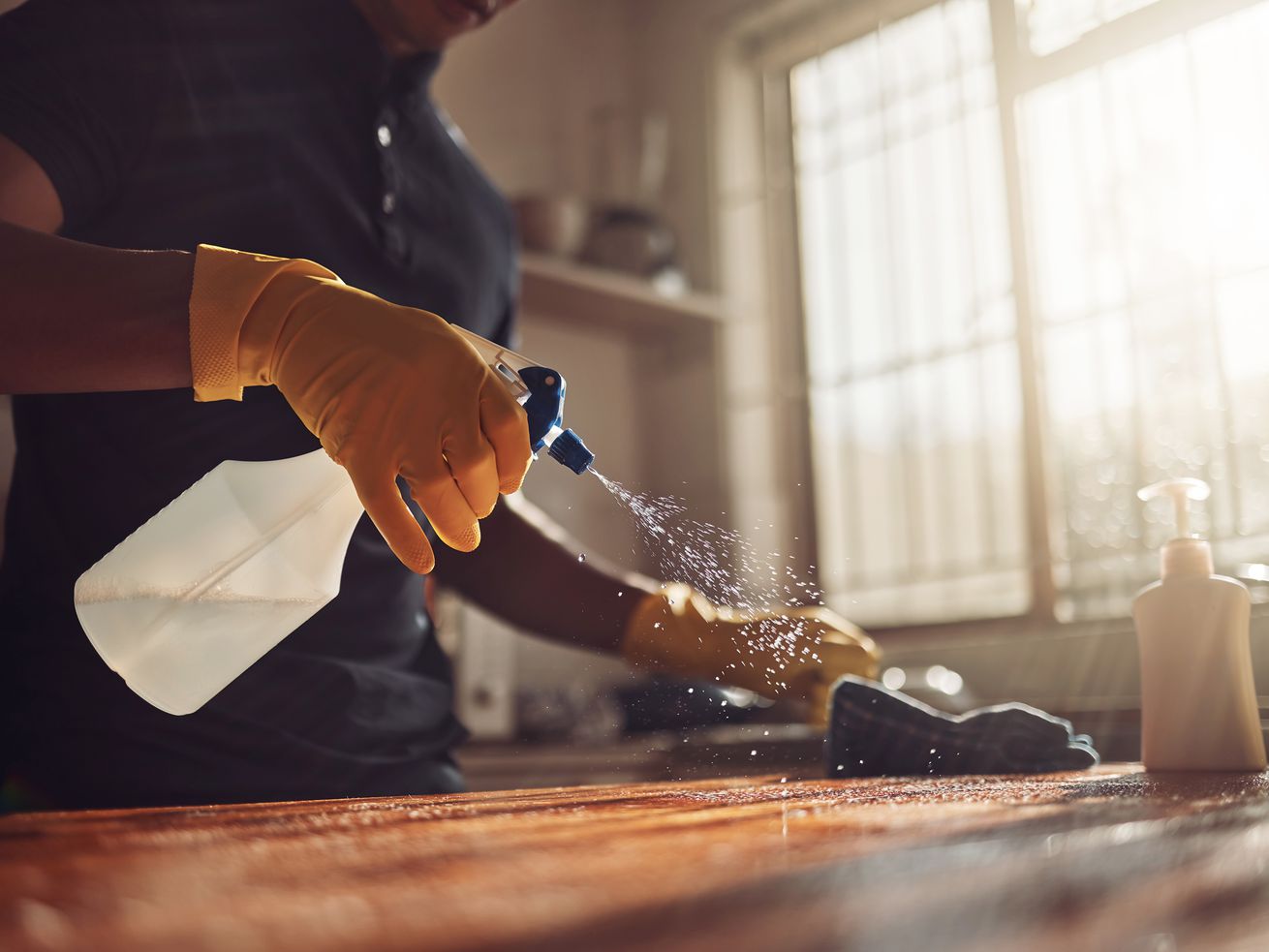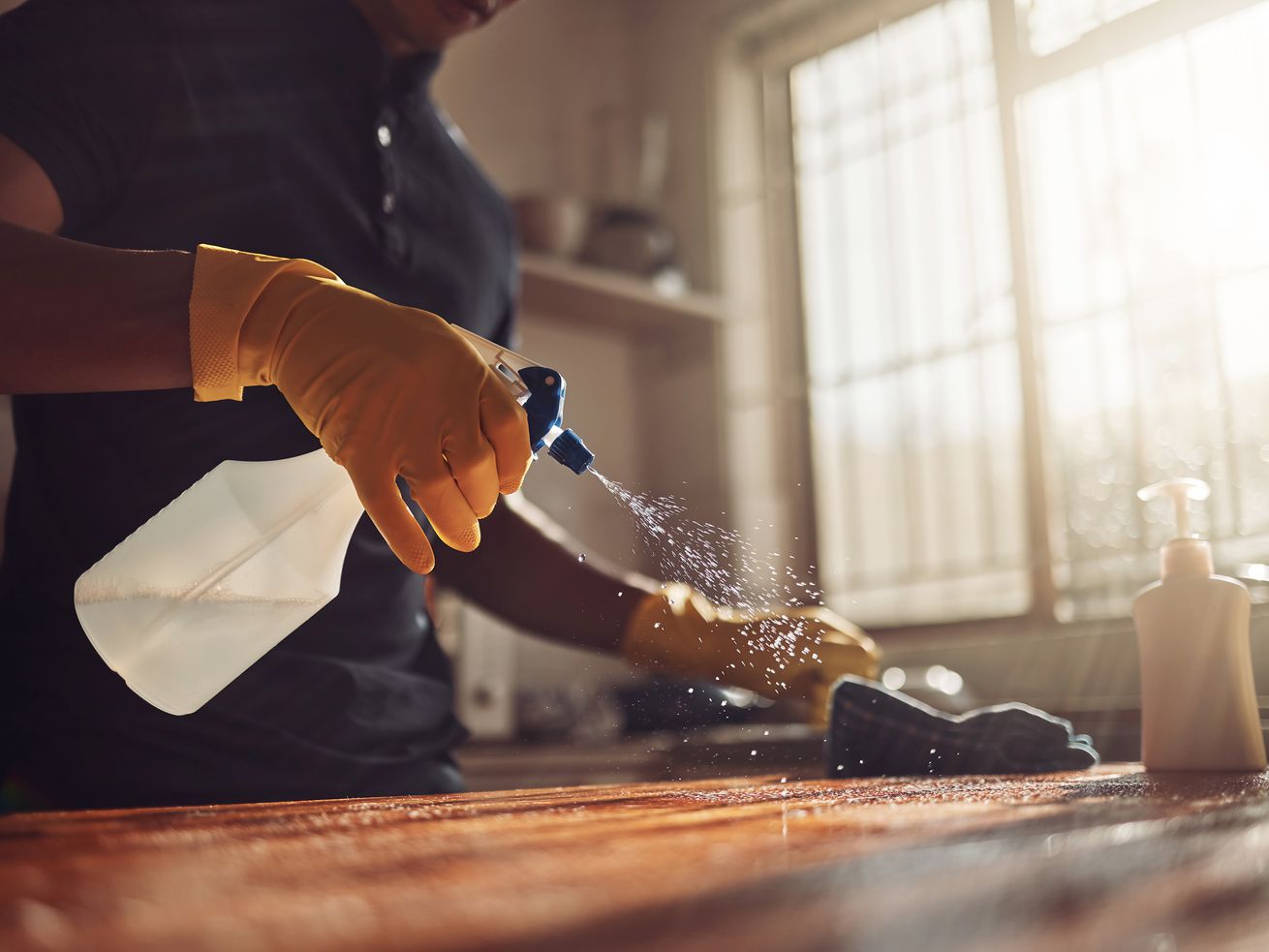How to Clean Butcher Block Surfaces

>

iStock
Learn how to sanitize and protect your butcher block with these easy DIY steps.
Butcher block—whether part of a kitchen counter, island, cutting board, or table—is a popular material for its attractive woodgrain appearance and pliable cutting surface. Typically constructed with end-grain wood, butcher block surfaces are “self-healing,” meaning cuts tend to close up over time. But although some sources have praised its possible antibacterial properties, butcher-block can still become dulled and dirty with use, which is why it’s important to know how to clean and maintain it properly.
Tools and Materials
For this easy DIY project, you’ll need the following items:
a dough scraperkosher saltlemon juicebaking sodascouring pad or stiff scrubbing brushpaper towelsrazor blade scraper or fine-grit sandpaperfood-grade mineral oila lint-free clothKeeping butcher block in good condition requires some TLC. It can’t be thrown into the dishwasher because of the high heat, and it doesn’t handle regular household cleaners, like bleach, well. So you’ll have to take some special steps to clean and maintain your butcher-block surfaces.
How to Clean Butcher Block
The best ingredients for cleaning a butcher block surface are kosher salt, lemon, and baking soda. Vinegar isn’t always the best candidate because its acidic properties can dissolve the glue that joins together the wooden pieces of butcher block, and bleach will lighten the deep hues of the wood, rendering it less attractive. Here are a few steps for cleaning butcher block:
To start, use a dough scraper to remove any small, stubborn food particles that are stuck on the surface.Then sprinkle on a generous pile of kosher salt, and squeeze a large amount of lemon juice over it.Use a scouring pad or stiff scrubbing brush to form a paste with these ingredients and spread it over the entire surface, scrubbing it vigorously and evenly into the wood. Pay particular attention to stains and give those areas some extra elbow grease.After you’ve covered the whole surface, rinse the wood with warm water, and pat it dry with paper towels. Next, pour a mound of baking soda onto the surface and add some drops of water to form a paste.Go over the surface again with this mixture, using the same scouring pad or scrubbing brush.Again, rinse the solution off with warm water and use paper towels to pat dry.Allow the surface to further dry overnight before placing anything on top of it. If your butcher block is excessively stained or appears noticeably dull, you may want to consider sanding off a thin layer to start over with the fresh material underneath.
How to Maintain Butcher Block Counters
Once your butcher block surface has been properly cleaned, the next step is to treat it with mineral oil to keep it supple. Make sure you’re applying food-grade mineral oil since the surface is used for food preparation. Mineral oil helps wood retain its inner moisture while preventing liquid from seeping in. To help maintain your butcher block surfaces, follow these steps:
To apply the mineral oil, pour a small puddle right onto the surface and use a lint-free cloth to rub it into the wood.Let the oil sit for an hour. If it’s completely absorbed in that time, apply more oil, and repeat this process until the wood stops drinking the oil.Then use a lint-free cloth to wipe off the excess oil and you’re done! Treat your butcher block surface with mineral oil once a season, and more often during the drier months or if you live in an arid location. Keeping the wood supple and moist goes a long way to maintaining its health and natural beauty.
